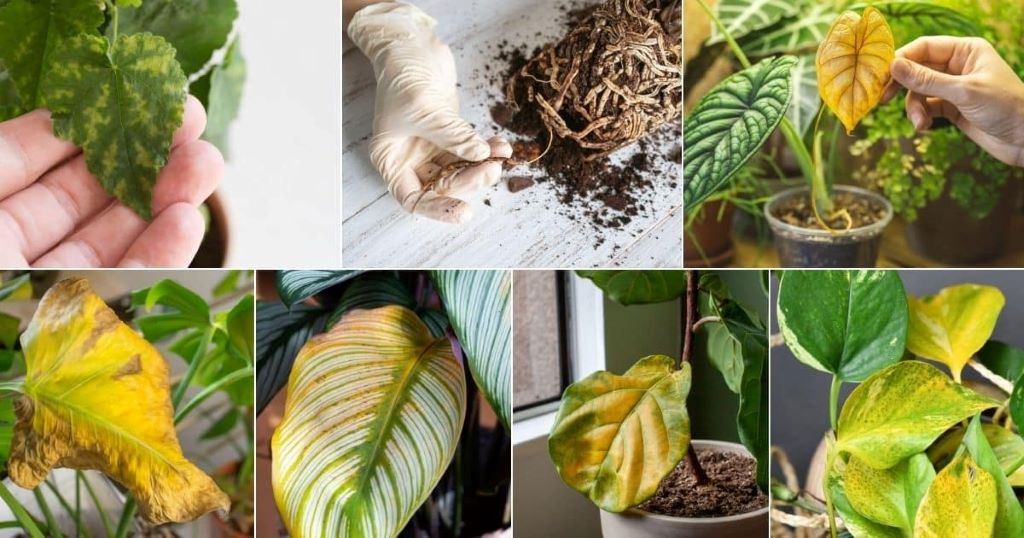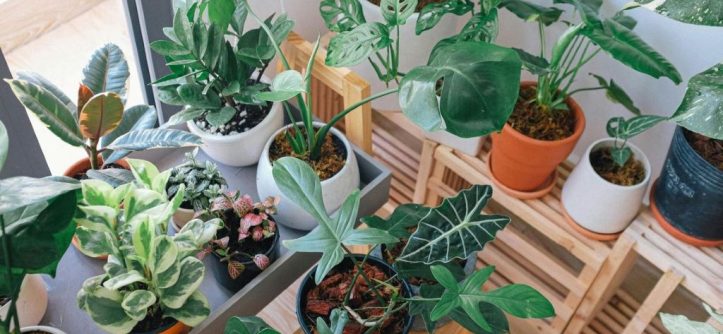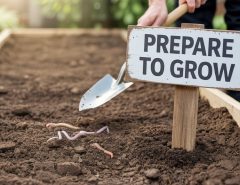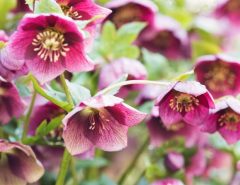Houseplants bring life and beauty to any home, but keeping them thriving can be a challenge. Whether you’re a seasoned plant parent or a beginner, issues like yellowing leaves, wilting, or pests can leave you frustrated. Fortunately, with the right knowledge, you can master detailed care tips, identifying plant problems, and solutions to keep your greenery healthy. At The Village Gardener, you’ll find expert advice to guide you through every step of plant care. This article offers practical, easy-to-follow tips to diagnose and fix common houseplant problems, ensuring your plants stay vibrant and strong.
Why Houseplants Struggle: Common Causes
Houseplants face a variety of challenges, from improper watering to inadequate light. Understanding the root causes of these issues is the first step to fixing them. Many problems stem from environmental factors, care mistakes, or pests. For example, overwatering is a leading cause of plant decline, while insufficient light can stunt growth. Additionally, pests like spider mites or fungal infections can wreak havoc if not addressed early. By learning to spot these issues, you can take action before they become severe.
For detailed insights, resources like The Village Gardener provide expert guidance on detailed care tips, identifying plant problems. Their advice helps you pinpoint issues and apply effective solutions. Start by observing your plant closely—changes in leaves, stems, or soil can offer clues about what’s wrong.
Recognizing Key Symptoms of Plant Distress
Every plant communicates its health through visible signs. Learning to read these signals is crucial for effective troubleshooting. Here are some common symptoms and what they might mean:
- Yellowing Leaves: Often a sign of overwatering, nutrient deficiency, or poor light.
- Wilting or Drooping: Could indicate underwatering, root rot, or low humidity.
- Brown, Crispy Leaf Edges: Typically caused by low humidity, underwatering, or excessive direct sunlight.
- Spots or Discoloration: May point to fungal infections, pests, or chemical burns from over-fertilizing.
- Slow Growth or Legginess: Usually linked to insufficient light or lack of nutrients.
Take note of these symptoms and compare them to your plant’s care routine. For instance, yellow leaves on a plant in soggy soil likely indicate overwatering. However, the same symptom in dry soil might suggest underwatering. Careful observation helps you narrow down the cause.
Diagnosing Watering Issues
Watering mistakes are the most common reason houseplants struggle. Both overwatering and underwatering can cause serious harm, but the symptoms differ. Overwatering often leads to yellow leaves, mushy stems, or a foul-smelling soil odor. In contrast, underwatered plants may have dry, brittle leaves or drooping stems.
To diagnose watering issues, check the soil. Stick your finger about an inch into the soil. If it feels soggy, reduce watering and ensure proper drainage. If it’s bone dry, water thoroughly and adjust your schedule. Additionally, consider the plant’s needs—succulents require less water than tropical plants like peace lilies. Using pots with drainage holes and well-draining soil can prevent many watering-related problems.
Addressing Light and Temperature Problems
Light and temperature play a huge role in plant health. Each plant has specific light requirements, such as bright indirect light for monstera or low light for snake plants. Too much direct sunlight can scorch leaves, while too little can cause weak, leggy growth.
To fix light issues, observe your plant’s location. If it’s stretching toward a window, it may need more light. Move it closer to a bright, filtered light source or use a grow light. Conversely, if leaves show burn marks, relocate the plant to a spot with less direct sun. Temperature is equally important. Most houseplants thrive between 65-80°F. Avoid placing plants near drafty windows or heating vents, as sudden temperature changes can cause stress.

Tackling Pests and Diseases
Pests and diseases can quickly damage houseplants if not caught early. Common pests include spider mites, aphids, mealybugs, and scale. These tiny invaders often hide on the undersides of leaves or in leaf joints. Signs include sticky residue, webbing, or tiny moving dots.
To treat pests, isolate the affected plant to prevent spreading. Wipe leaves with a damp cloth or use insecticidal soap for mild infestations. For severe cases, neem oil is an effective, natural solution. Fungal diseases, like powdery mildew or root rot, often stem from overwatering or poor air circulation. Improve ventilation, reduce watering, and remove affected parts to stop the spread. Always sanitize tools after use to avoid cross-contamination.
Nutrient Deficiencies and Fertilizing Tips
Plants need nutrients like nitrogen, phosphorus, and potassium to grow strong. A lack of these can cause stunted growth, pale leaves, or weak stems. However, over-fertilizing can burn roots or cause leaf tip browning.
To address nutrient deficiencies, use a balanced, water-soluble fertilizer (like 10-10-10) during the growing season (spring and summer). Dilute it to half-strength to avoid overwhelming the plant. Apply every 4-6 weeks, following the plant’s specific needs. In fall and winter, reduce or stop fertilizing, as most plants enter a dormant phase. If you notice pale leaves despite fertilizing, test the soil pH, as improper pH can block nutrient absorption.
Repotting and Soil Health
Healthy soil is the foundation of a thriving plant. Over time, soil can become compacted or depleted, restricting root growth and nutrient uptake. Signs your plant needs repotting include roots circling the pot, slow growth, or water pooling on the surface.
Repot every 1-2 years or when the plant outgrows its pot. Choose a pot one size larger with drainage holes. Use a fresh, well-draining potting mix suited to your plant—cacti need sandy soil, while ferns prefer moisture-retaining mixes. Gently loosen the roots during repotting to encourage growth. After repotting, water lightly and place the plant in indirect light to help it adjust.
Preventing Future Problems
Prevention is easier than fixing plant issues. Establish a consistent care routine tailored to each plant’s needs. Here are some tips to keep your plants healthy:
- Check Soil Regularly: Ensure it’s neither too wet nor too dry.
- Monitor Light Conditions: Adjust plant placement as seasons change.
- Clean Leaves: Dust can block sunlight, so wipe leaves gently with a damp cloth.
- Rotate Plants: Turn pots regularly for even light exposure.
- Inspect for Pests: Catch infestations early by checking leaves weekly.
Additionally, group plants with similar needs together to simplify care. For example, place humidity-loving plants like calatheas in a bathroom or near a humidifier. Keeping a care journal can help you track watering, fertilizing, and any issues, making troubleshooting easier.
Conclusion
Caring for houseplants doesn’t have to be overwhelming. By mastering detailed care tips, identifying plant problems, and applying targeted solutions, you can keep your plants thriving. Start by observing symptoms like yellow leaves or wilting, then adjust watering, light, or pest control as needed. Regular maintenance, such as proper fertilizing and repotting, prevents many issues. With these strategies, you’ll troubleshoot like a pro and enjoy a lush, healthy indoor garden. For more expert advice, explore resources like The Village Gardener to deepen your plant care knowledge.
Frequently Asked Questions
Why are my houseplant’s leaves turning yellow?
Yellow leaves often indicate overwatering, underwatering, or nutrient deficiencies. Check the soil moisture and adjust watering. Ensure the plant gets proper light and consider fertilizing if needed.
How do I know if my plant needs more light?
If your plant is stretching toward a window or has leggy growth, it likely needs more light. Move it to a brighter spot with indirect light or use a grow light.
What’s the best way to get rid of plant pests?
Isolate the plant, wipe leaves with a damp cloth, or use insecticidal soap. For stubborn pests, apply neem oil and repeat treatments weekly until the infestation is gone.
How often should I repot my houseplants?
Repot every 1-2 years or when roots are crowded. Use fresh, well-draining soil and a slightly larger pot to support healthy growth.
Can I save a plant with root rot?
Yes, if caught early. Remove the plant from its pot, trim away mushy roots, and repot in fresh, well-draining soil. Reduce watering to prevent recurrence.
Read More:





Leave a Reply